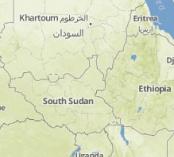
LANKIEN, South Sudan—The wounded started arriving in the evening. A rusted-out pick-up truck dropped off four young men with gunshot wounds, two with life-threatening wounds to the abdomen and the others with leg injuries, at the 100-bed Médecins Sans Frontières (MSF) hospital here. Just hours earlier, the hospital’s team and local residents had been playing volleyball as the sun began to set on a 106-degree day.
But things change quickly in the northern reaches of South Sudan’s Jonglei state, which, for the past decade now, has been the scene of increasingly deadly intercommunal fighting among the state’s three main tribes—the Dinka, Murle, and Lou Nuer. It is also home to the first homegrown insurgency since South Sudan was born two years ago following a devastating civil war.
Sorting out the various parties can be dizzying. The men who arrived on this night had been wounded during fighting between two clans of the Nuer tribe. The injured included young men from both sides of the fight. While trying to stabilize the patients, the medical team quickly had to sort out their clan affiliation and separate them into different wards. The medical team leader Abdul Wasay, an Afghan nurse and former refugee, immediately changed the rules for visiting hours and the number of caretakers permitted to enter the inpatient department, a structure consisting of four concrete walls, a wood door, and corrugated steel roof. He restricted access to the wards with the wounded patients to one female caretaker per patient. Even with these changes, the South Sudanese staff felt it was necessary to search all men and women entering the inpatient care area for any kind of weapons. Women have been known to smuggle in weapons to settle scores.
The full article continues at http://www.worldpolicy.org/journal/fall2013/Medicine-in-Crossfire on World Policy Journal’s website.

